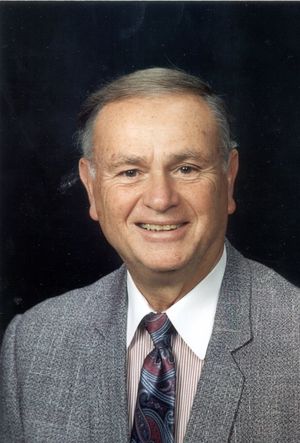Edward E. Hammer: Difference between revisions
No edit summary |
No edit summary |
||
| Line 1: | Line 1: | ||
<p>[[Image:Edward E. Hammer.jpg|thumb|right]] </p> | <p>[[Image:Edward E. Hammer.jpg|thumb|right]] </p> | ||
== | == Biography == | ||
<p>Born: 1931 </p> | <p>Born: 1931 </p> | ||
Revision as of 14:58, 12 January 2012
Biography
Born: 1931
For more than 45 years, Mr. Edward E. Hammer has held a place at the forefront of fluorescent lighting research. His significant technological contributions in incandescent, fluorescent and high-intensity discharge light sources have earned him over 35 patents and have helped to shape the modern lighting industry.
During the energy crisis of the 1970s, he led the development of General Electric's pioneering energy-efficient fluorescent lamp, the Watt-Miser. Its success was based on the kryptonlargon fill gas-which was compatible With electromagnetic ballasts already in the marketplace-and a novel, electrically conductive coating on the inside of the glass tube to facilitate reliable starting. All major lamp manufacturers still use the design today, and it is the cornerstone of many energy-saving lighting programs. In 1976, he developed the first compact fluorescent lamp. The original prototype of this spiral-shaped lamp is displayed at the Smithsonian Institution in Washington, D.C.
With more than 40 technical papers to his credit, Mr. Hammer has been called the Father of Fluorescent Signature Analysis. His methods for testing lamp/ballast compatibility are in use today, and are easy to apply and understand. He also has actively participated in ANSI/IEEE Standards activities as well as on IEEE Industry Applications Society (IAS) technical committees.
A Fellow of the IEEE and the Illuminating Engineering Society, he has won many awards including GE's Steuben Glass Replica Award and two IAS prize paper awards. He retired earlier this year as GE's Fluorescent Systems technical advisor, and is now an active consultant in his field.
Mr. Hammer won the 2002 Edison Medal "For contributions to design methods for energy efficient fluorescent lighting systems and development of lighting products."
